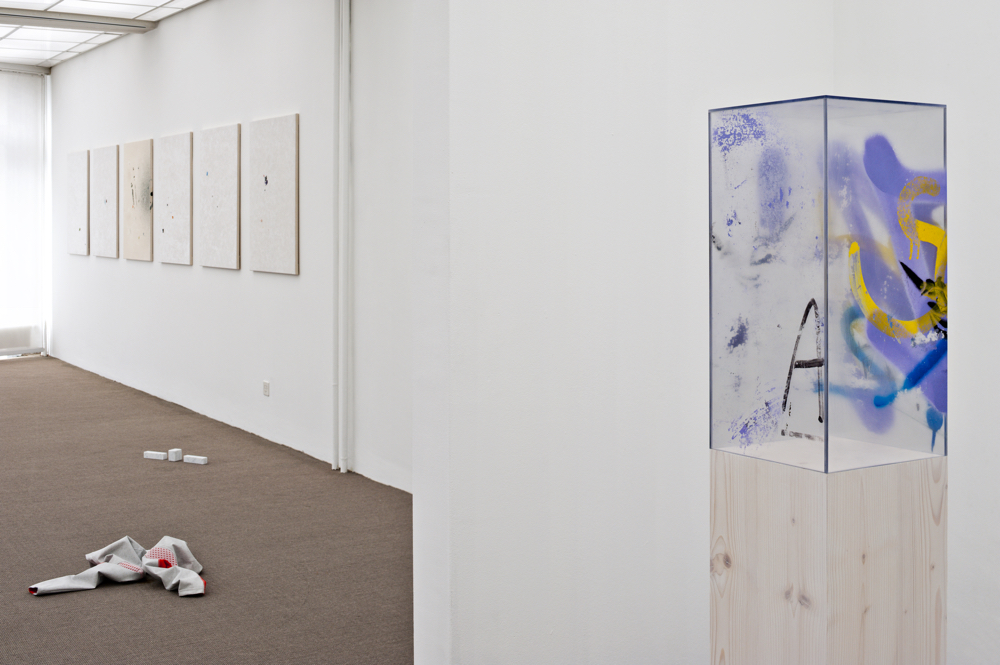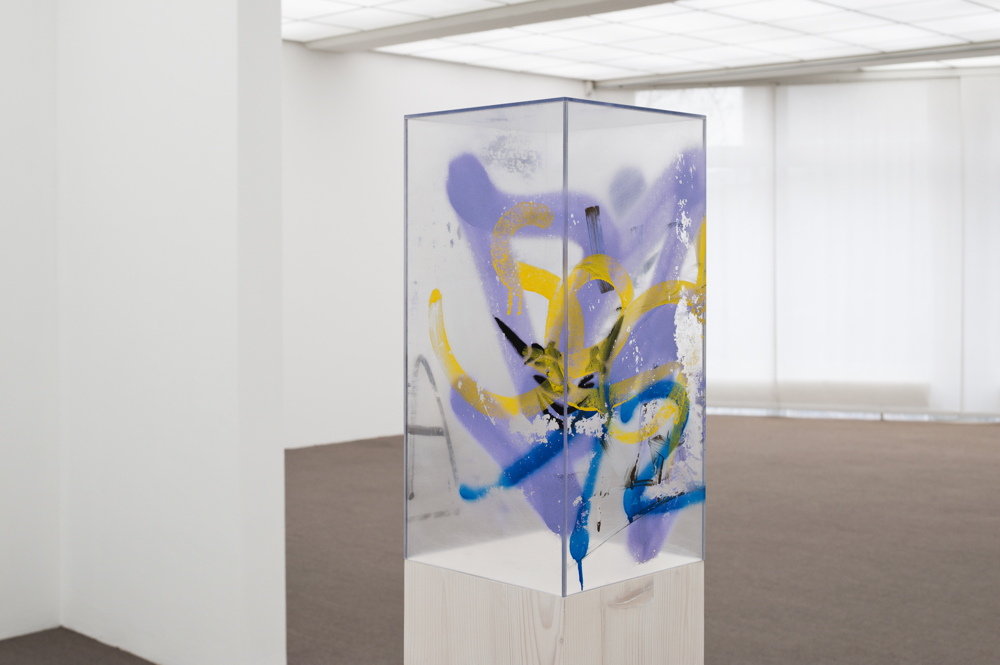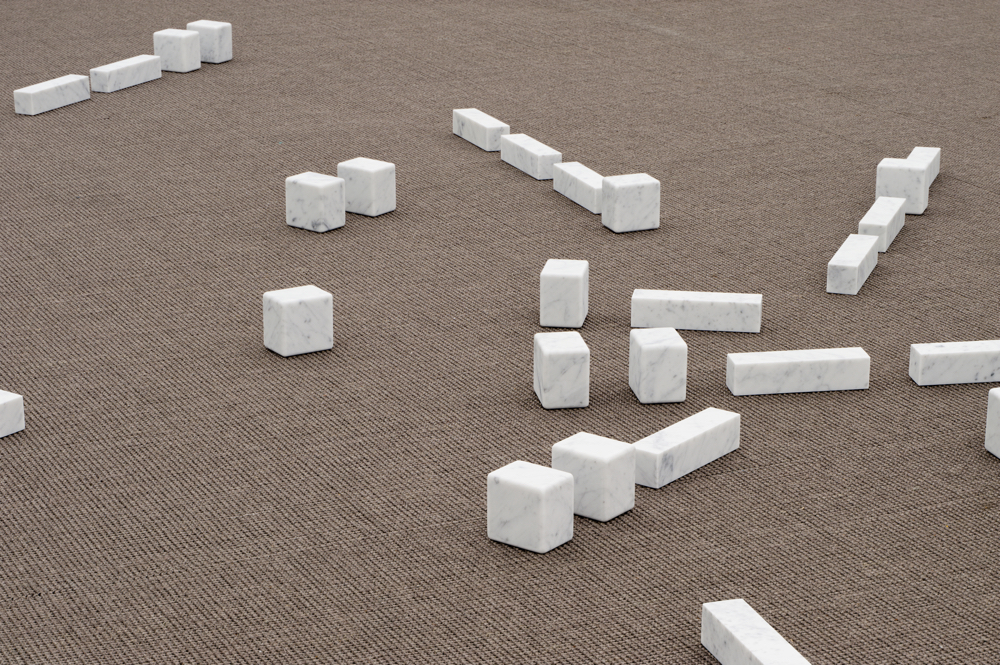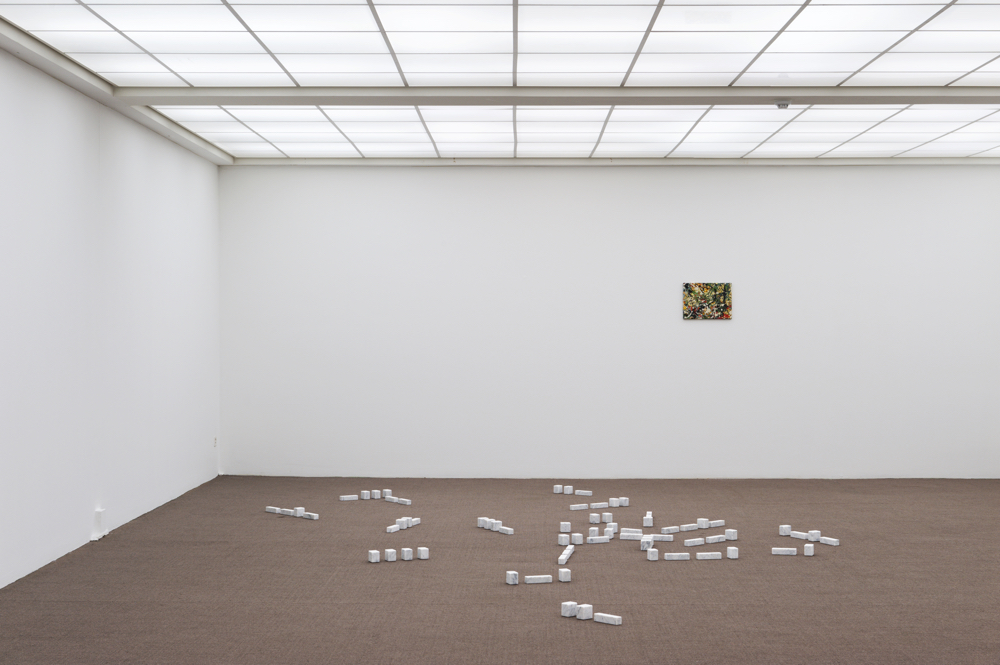Raphael Linsi
Pump up pose down
28.1. —
18.3.2012




Kunsthaus Baselland is glad to present the first institutional solo exhibition by the young Swiss artist Raphael Linsi (*1982 in Zurich, lives in Basel). The artist completed his Bachelor of Fine Arts at FHNW/HGK Basel in 2010. Together with the curator collective the “forever ending story”, which he founded together with Tilman Schlevogt, Claudio Vogt and Pedro Wirz, and with his own project Lake&Only that he works on since Linsi has already made a name for himself in the Basel art scene. His works were shown in group exhibitions, among others in Basel, Zurich, Hamburg and Vienna. In his sculptures, installations, paintings und videos shaped by conceptual deliberations Raphael Linsi questions the role of the artist, the basic and production conditions of art, as well as their mechanisms of reception and marketing. His bachelor work for instance consisted of a tattoo, whose wording ‹artist› was in his mentor Prof. René Pulfer’s original handwriting. A contract regulated the copyright issues between the two, writing sketches and video prints demonstrated the production process. Silhouette (2010), a painted image of the standard image for Facebook users in unlimited edition also testifies in a characteristic way to Linsi's conceptual work development. In the choice of subject the picture made in the tradition of portrait painting questions the idea of the individuality of the portrayed person and, due to the unlimited edition, breaks with the traditional notion of the painted unique copy.
For his exhibition in Kunsthaus Baselland, Linsi focused for a longer period on ideas on sports and art. Kunsthaus Baselland with its immediate neighbourhood to the football stadium, the Gartenbad, Vita Parcours and other sportive establishments played their part in these deliberations. The title pump up pose down consequently stems from the identical name of the last two phases in the training cycle of bodybuilders, which describes the shaping of the muscles and putting them temporarily on public display. Linsi draws a parallel with the exhibition processes, whose ‘pump up’ denotes the production process away from the public, and the ‘pose down’ the public processes during the exhibition. The initial considerations can be experienced only rudimentarily in the exhibition. For instance, the supposed sport leggings Zwei Legginz (2011), created in collaboration with designer Stefanie Salzmann, bear witness to deliberations on the temporary expenditure of energy during exercise with the aim of conserving energy in the long-term — similar to the artistic activity that aims at a long-term career in art with continuous conception and implementation of works.
Another highlight of the exhibition is the sculptural installation Kollasche (2012) consisting of an Plexiglas display case and a matching pedestal. The artist found, selected and acquired the Plexiglas in the outdoor urban environment. Numerous remains of sprayed lines, graffiti and tags have left traces on it that Linsi now appropriated for himself as visual material and then transformed this into a glass case, which itself forms the work. The presented work and the representative form accepted by art history merge into one. The blue number ‘12’, which is still legible, makes its context of origin clear and connects it to the FC Basel fans who consider themselves respectively as the ‘12th man on the field’.
In the series of paintings specifically designed for the exhibition, Ice Kold (2012), Linsi explores the ratio between the expenditure of energy and the success of art. Minimal gestures, in which matter and colour determine the composition of the painting, dominate the surface of the painting, minutely primed with a small brush. The individual splash of colour becomes a miniature sculpture on the resulting cloud-like area. Every impression of the brush becomes a sculptural gesture, a leftover hair of the brush being a conscious conceptual decision. Linsi‘s paintings are clever statements on painting, which are aware of their statement character, themselves being a citation about the grand gestures of art historical painting. Thereby, combining ‘dilettantism and smart-assing’ as Linsi formulates it.
Running through the exhibition like a red thread there is also the sculpture Syntaxtix (2012), which reverts to the Morse code. The individual sculptures carved in white Carrara marble form alphabets made of three-dimensional lines and points. They represent a linguistic system which refers both to the enduring tradition of classical sculpture, but also to its self-referential language option that is capable of speaking with itself about itself, which prerequisites the knowledge of the Morse alphabet. The painting Copy Number 8 (2009) is a copy of Jackson Pollock's painting Number 8 ordered from cool-arts.com. The detailed copying of a drip painting is contrary to the gestural image generation of abstract expressionism. Linsi appropriated the ordered copy for himself and once again questions the system of art.
On occasion of the opening Raphael Linsi will carry out the intervention Juice und Architektur II in collaboration with the artist Friedemann Heckel. In the process the exterior facade of the Kunsthaus Baselland will be worked on with Hot Quick Bronze — Posing Gel — a literal ‘pump up’ with temporarily visual consequences! Stacked invitation posters refer to Linsi's curatorial activity that draws a connection between his exhibition at Kunsthaus Baselland and the simulatenously running exhibition by Giorgio Sadotti curated by him at the Lake & Only gallery.
Text from Sabine Schaschl